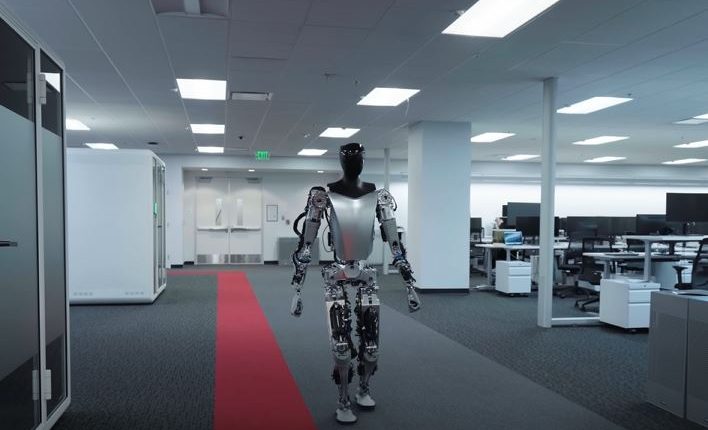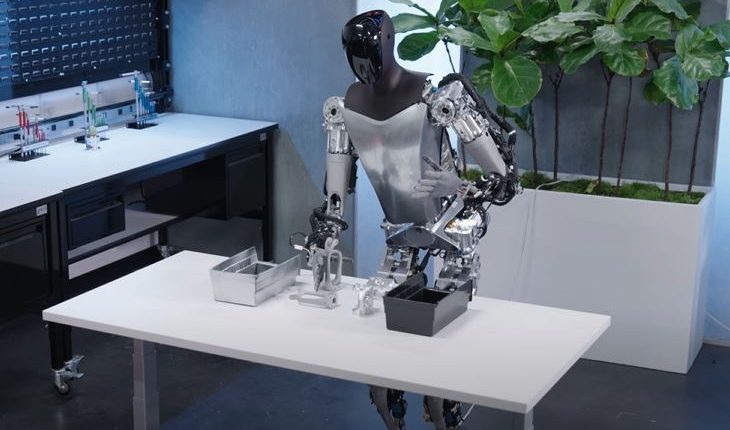
In a groundbreaking move, Tesla, renowned for its electric cars, solar panels, and batteries, unveiled the Optimus Gen 2 humanoid robot, showcasing significant advancements in the field of robotics.
The Optimus Gen 2 stands as the second iteration of Tesla’s humanoid robot, promising enhanced capabilities, improved aesthetics, and a myriad of applications across industries.
Tesla Unveils Optimus Gen 2
Optimus Gen 2 represents Tesla’s pursuit of a versatile humanoid robot designed to assist humans in diverse domains such as manufacturing, construction, healthcare, and entertainment.
This new iteration builds upon the foundation of its predecessor, offering a more refined and capable robotic solution.
Key Features of Optimus Gen 2:
- Physical Specifications: The robot stands at 5 feet 11 inches tall, weighing 121 lbs—22 lbs lighter than its predecessor.
- Speed: Capable of running at a speed of 5 mph, marking a 30% increase in speed compared to the previous version.
- Degrees of Freedom: With 35 degrees of freedom, the robot exhibits a wide range of joint movements, allowing for increased flexibility and agility.
- Appearance and Movement: Optimus Gen 2 boasts a more human-like appearance and movement, featuring new hands, feet, neck, and body components.
- Hands: The robot’s hands have 11 degrees of freedom, equipped with tactile sensors and faster actuators for precise object manipulation.
- Feet: Redesigned feet with force/torque sensors and articulated toes enhance balance and enable smoother walking.
- Neck: Two degrees of freedom in the neck provide expressiveness and flexibility.
- Body: Integrated electronics and wiring contribute to a streamlined and robust design, accompanied by a new white color scheme.
Read more: AI-Powered “Nudify” Apps That Undress Women In Pictures Are Becoming Popular
Tesla Optimus Gen 2: A Milestone in Robotic Advancement

Optimus Gen 2 marks a significant achievement for Tesla and the broader field of robotics. It symbolizes the rapid progress and innovation in developing humanoid machines that can rival or even surpass human capabilities.
The robot’s potential applications span across industries, addressing tasks that are dangerous, dull, or challenging for humans.
While Tesla is not the only player in the humanoid robotics arena, it holds a distinct advantage in terms of mass production and scalability.
Leveraging its expertise and infrastructure in manufacturing electric vehicles and batteries, Tesla aims to carve a niche for itself in the rapidly evolving landscape of humanoid robotics.
Beyond the technological marvel, questions arise about the coexistence and collaboration between humans and humanoid robots.
As we enter a new era of robotics, considerations about ensuring the beneficial integration of these machines into our society become crucial.
Tesla’s Optimus Gen 2 serves as a catalyst for contemplating the implications and future trajectory of humanoid robotics.
Read more: Voice Behind Max Payne And Alan Wake, James McCaffrey, Passes Away At 65

